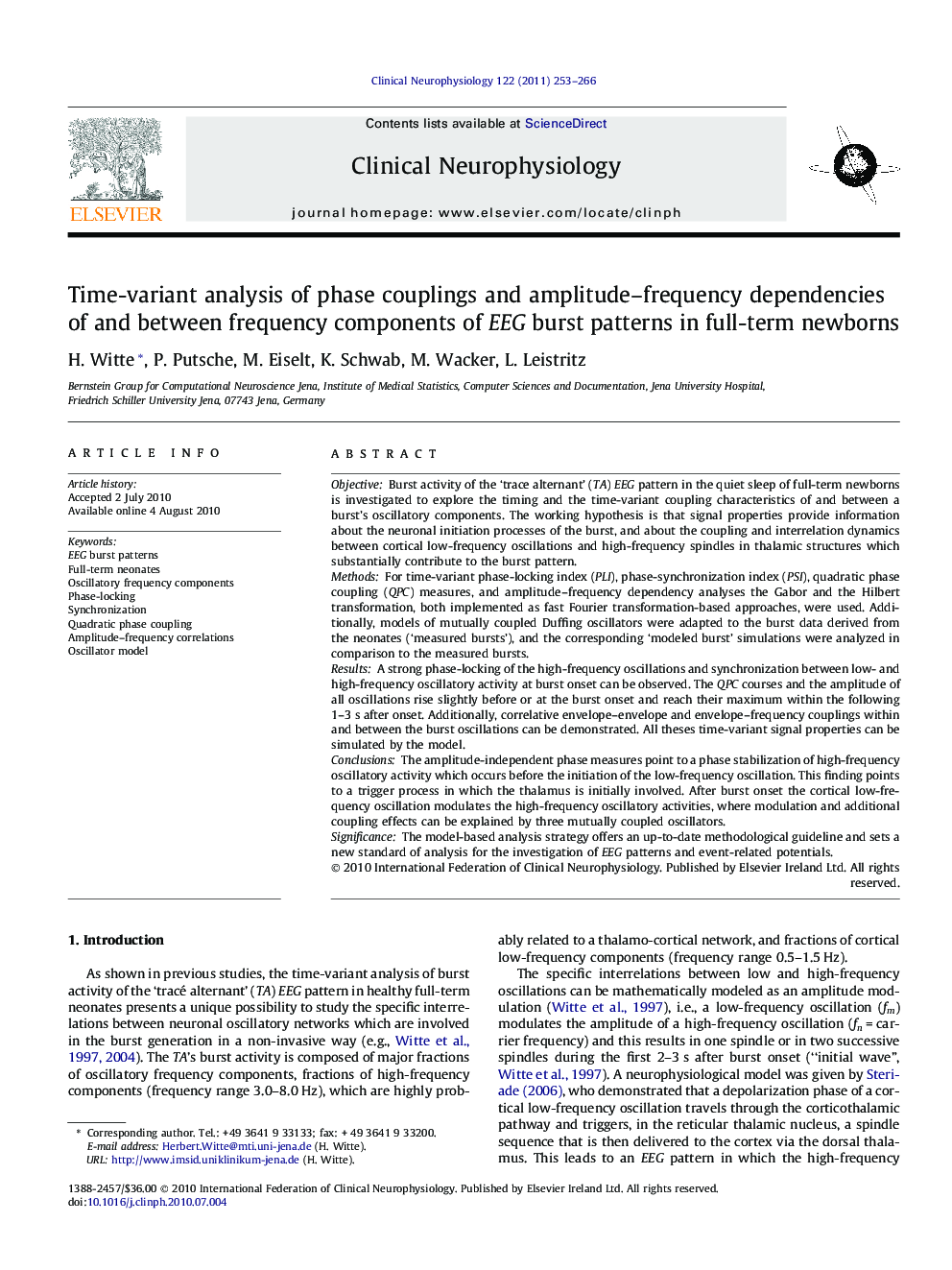| Article ID | Journal | Published Year | Pages | File Type |
|---|---|---|---|---|
| 3044978 | Clinical Neurophysiology | 2011 | 14 Pages |
ObjectiveBurst activity of the ‘trace alternant’ (TA) EEG pattern in the quiet sleep of full-term newborns is investigated to explore the timing and the time-variant coupling characteristics of and between a burst’s oscillatory components. The working hypothesis is that signal properties provide information about the neuronal initiation processes of the burst, and about the coupling and interrelation dynamics between cortical low-frequency oscillations and high-frequency spindles in thalamic structures which substantially contribute to the burst pattern.MethodsFor time-variant phase-locking index (PLI), phase-synchronization index (PSI), quadratic phase coupling (QPC) measures, and amplitude–frequency dependency analyses the Gabor and the Hilbert transformation, both implemented as fast Fourier transformation-based approaches, were used. Additionally, models of mutually coupled Duffing oscillators were adapted to the burst data derived from the neonates (‘measured bursts’), and the corresponding ‘modeled burst’ simulations were analyzed in comparison to the measured bursts.ResultsA strong phase-locking of the high-frequency oscillations and synchronization between low- and high-frequency oscillatory activity at burst onset can be observed. The QPC courses and the amplitude of all oscillations rise slightly before or at the burst onset and reach their maximum within the following 1–3 s after onset. Additionally, correlative envelope–envelope and envelope–frequency couplings within and between the burst oscillations can be demonstrated. All theses time-variant signal properties can be simulated by the model.ConclusionsThe amplitude-independent phase measures point to a phase stabilization of high-frequency oscillatory activity which occurs before the initiation of the low-frequency oscillation. This finding points to a trigger process in which the thalamus is initially involved. After burst onset the cortical low-frequency oscillation modulates the high-frequency oscillatory activities, where modulation and additional coupling effects can be explained by three mutually coupled oscillators.SignificanceThe model-based analysis strategy offers an up-to-date methodological guideline and sets a new standard of analysis for the investigation of EEG patterns and event-related potentials.
